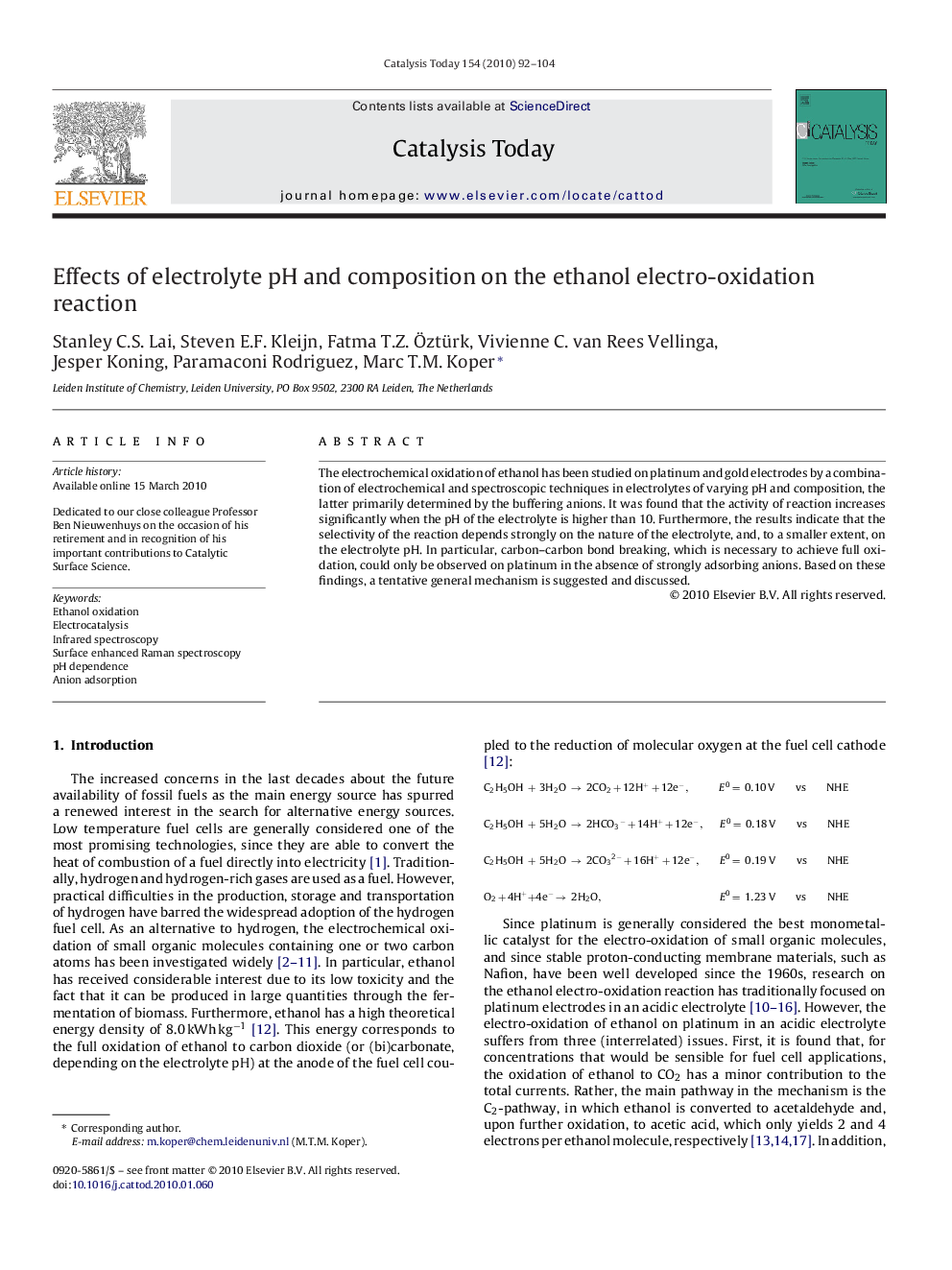| Article ID | Journal | Published Year | Pages | File Type |
|---|---|---|---|---|
| 56678 | Catalysis Today | 2010 | 13 Pages |
The electrochemical oxidation of ethanol has been studied on platinum and gold electrodes by a combination of electrochemical and spectroscopic techniques in electrolytes of varying pH and composition, the latter primarily determined by the buffering anions. It was found that the activity of reaction increases significantly when the pH of the electrolyte is higher than 10. Furthermore, the results indicate that the selectivity of the reaction depends strongly on the nature of the electrolyte, and, to a smaller extent, on the electrolyte pH. In particular, carbon–carbon bond breaking, which is necessary to achieve full oxidation, could only be observed on platinum in the absence of strongly adsorbing anions. Based on these findings, a tentative general mechanism is suggested and discussed.
